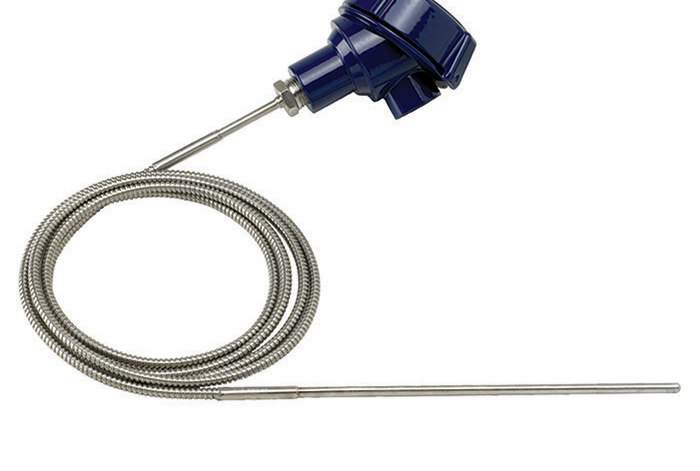
Questions and answers about why resistance temperature detectors are ideal for many refining, processing, and manufacturing applications, and what to keep in mind when choosing the RTDs that meet your specifications.
Accurate temperature measurement is essential in research labs, hospitals, refineries, chemical plants, food producers, and pharmaceutical manufacturers. That’s why a great many lab and industrial applications today pick reliable, accurate resistance temperature detectors (RTDs) as the temperature measurement instrument of choice.
An RTD is a temperature sensor that determines temperature changes using a metal resistor. The resistance value of the metal wire resistor that comprises the operating element of the RTD varies as the temperature changes. Since the resistance of the metal (typically platinum) wire is a known constant, changes in temperature can be accurately calculated based on the change in the resistance of the wire.
Can RTDs be used in all applications?
No. RTDs can only be used at temperatures up to about 900–1000°F (482–538°C). Therefore, high-temperature mining, refining, and similar applications typically use thermocouple temperature measurement systems. RTDs are also not typically used in applications under 200°F (93°C) because bimetal or expansion thermometers can get the job done for less money.
Can RTDs fit into small spaces?
Yes. WIKA offers several compact RTDs for industrial temperature measurement use:
- The WIKA Model TR15 Remote Mount Industrial RTD Assembly is a remote-mounted industrial thermometer with or without a temperature transmitter. These compact instruments are ideal for process or manufacturing applications where direct mounting is difficult or impossible, in areas of excessive radiated or conducted heat, or for applications with significant vibration.
- The WIKA Model TR58 Bearing RTD sensor, designed for installation in areas with limited space, offers a rapid response time. These compact, reliable, and accurate resistance thermometers are typically used to detect temperature increases in bearings, thrust bearing plates, shafts, and motor windings. The bearing sensors RTD elements are based on thin-film technology and are tip sensitive and vibration resistant.
Are RTDs used for HVAC applications?
Yes. The WIKA TR60 RTD for HVAC measures ambient air temperature. These robust flexible instruments can be used in humid or dry environments and for indoor and outdoor environments. TR60 RTD series assemblies are typically used to measure the temperature in air-conditioned rooms, cold storage rooms, warehouses, and grain silos.
What kinds of RTDs are used in the sanitary industry?
WIKA offers several types of RTDs that meet the specialized requirements of sanitary industries:
- WIKA’s TR22 line of sanitary RTD transmitters is designed for hygienic applications in the food, pharmaceutical, and biotech industries. A removable measuring insert in TR22 sanitary temperature transmitters makes them simple to calibrate. This innovative sanitary sensor includes a stainless steel head that can be cleaned in all mounting positions.
- The WIKA model TR25 in-line resistance transmitter completely eliminates dangerous dead spaces, produces no obstructions to the process flow, and permits quick and easy cleaning of the measuring point (supports both SIP and CIP cleaning).
Can RTD sensors be combined with transmitters?
Yes. WIKA offers several RTD-sensor-based temperature transmitters, including the Model T15 and the Model T53 Fieldbus temperature transmitter. Adding a transmitter to an RTD sensor enables the temperature data to be sent to a remote control location, as well as to be viewed in a local display. For more information about RTDs and temperature measurement in the food and pharma industries, check this WIKA Special Report on Pressure, Temperature, and Level Measurement for Sanitary Applications (p. 24).

